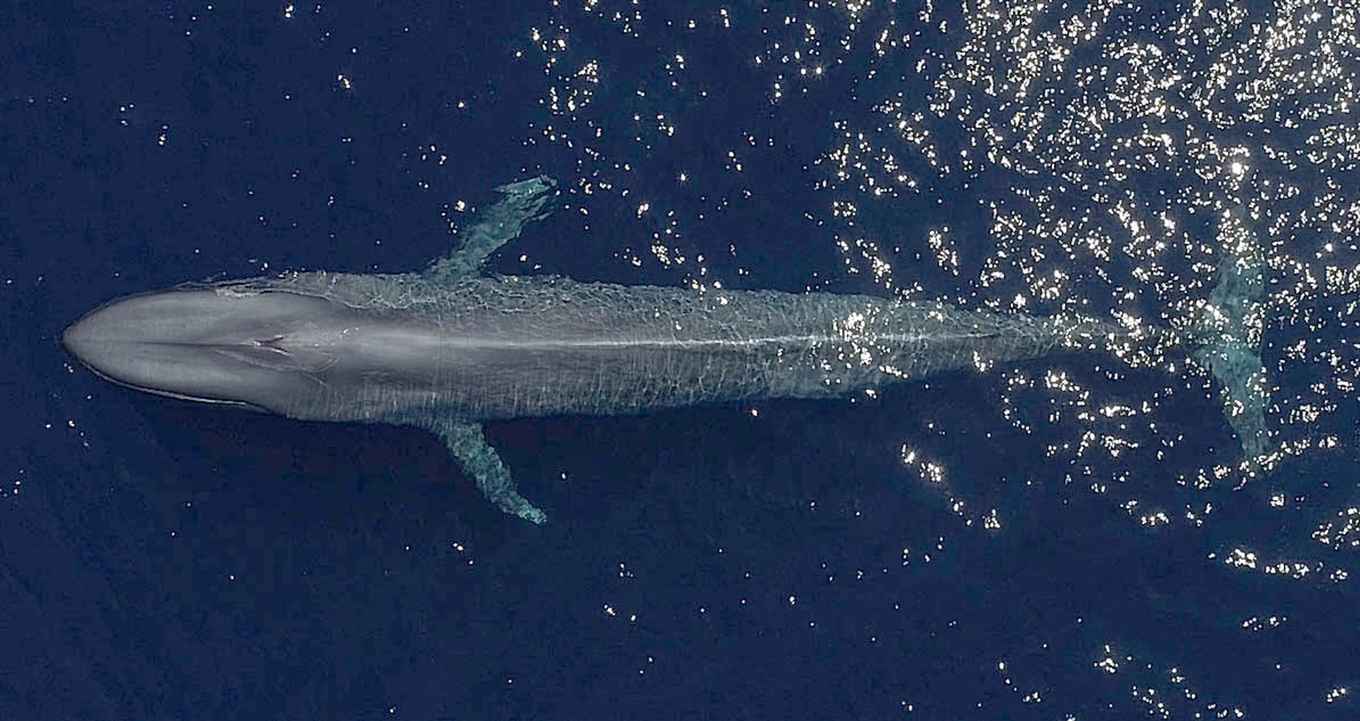How did baleen whales become our planet’s giants?
12 December 2019

As a result of the evolution of specialised foraging mechanisms, whales and dolphins (cetaceans) can be divided into two groups: filter-feeding baleen whales, which forage on large quantities of small prey (krill and fish), and toothed whales that hunt one prey at a time (fish or squid) using biosonar (the same technique used by bats).
To answer the question of why the filter-feeding whales grew so huge, the researchers compared the efficiency of foraging effort in as many species of whales and dolphins as possible. They looked at how much energy is gained versus how much energy is expended during foraging, and also investigated the mechanics of whale foraging: how does enormous body size enable and constrain energetic intake during feeding? The foraging behaviour of both sorts of whale was measured using non-invasive on-animal tags, attached to the skin by suction cups. This enabled the researchers to record the amount of energy used (diving depth and duration, swimming speed and acceleration) and prey intake during foraging behaviour. In combination with known dietary preferences and the caloric content of their prey, this data could then be translated into foraging efficiency information for all the studied species.
Foraging performance of baleen whales vs. toothed whales
Extremely large body size can only be maintained if the energy intake during foraging is considerably and consistently greater than the energy released during the search for and pursuit of prey. Therefore, baleen whales were expected to greatly exceed the feeding performance of toothed whales. This indeed proved to be the case. Thanks to the interaction between their specialised foraging technique (swallowing enormous amounts of prey and water that can even exceed their own body volume) and their seasonal exploitation of vast, dense swarms of small prey, they achieve unparalleled foraging performance. Toothed whales, on the other hand, are often limited by the supply of their prey.
Will baleen whales get even bigger? That is unlikely. According to Visser: ‘Ultimately, they are limited by the maximum availability of seasonally abundant prey and the speed at which they can eat them – here, the limit seems to have been reached.’
Publication details
J.A. Goldbogen, D. E. Cade, D. M. Wisniewska, J. Potvin, P.S. Segre, M. S. Savoca, E. L. Hazen, M. F. Czapanskiy, S. R. Kahane-Rapport, S. L. DeRuiter, S. Gero, P. H. Tønnesen, W. T. Gough, M. B. Hanson, M. M. Holt, F. H. Jensen, M. Simon, A. K. Stimpert, P. Arranz, D. W. Johnston, D. P. Nowacek, S. E. Parks, F. Visser, A. S. Friedlaender, P. L. Tyack, P. T. Madsen, N. D. Pyenson. Why whales are big but not bigger: physiological drivers and ecological limits in the age of ocean giants. Science, 13 December 2019.